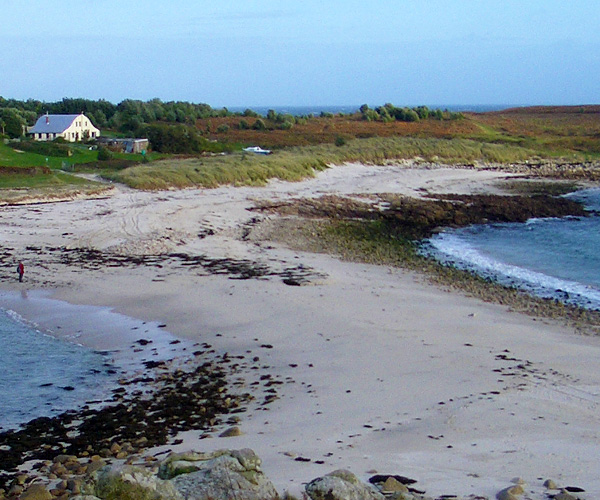Hottest Places in the UK
The Isles of Scilly have the highest mean annual temperature in the United Kingdom of 12.0 degrees Celsius (53.5 degrees Fahrenheit).
Not far behind are coastal areas of Southwest and Southeast England, where many low-elevation sites average above 11 °C (52 °F). Hot spots in these regions include Southampton, Weymouth and Dover.
Scilly maintains the UK's highest year-round average not by getting really hot, but rather by not getting really cold. Nighttime lows at Scilly throughout winter typically stay above 5 °C (41 °F). The ocean moderates temperature extremes and keeps southern coastal areas warm during winter. Being surrounded by the Atlantic Ocean, means the Isles of Scilly especially benefit from the seas's influence.
Although not on the ocean, London stands out as the second hottest place in the UK, based on highest mean annual temperature. Across the city, temperatures vary somewhat. Among the warmest weather stations are the Greenwich Royal Observatory at 11.9 °C (53.5 °F) and Heathrow Airport at 11.8 °C (53.2 °F) on average year-round. Instead of the ocean, it's the urban landscape that makes London warm.

Hottest place in the United Kingdom – Isles of Scilly.
Hot Places in Great Britain During Summer
Although it averages out as the hottest place year round, Scilly is not the hottest place in the UK during summer.
A summer day's typical high temperature on the Isles of Scilly is usually less than 20 °C (68 °F). Meanwhile, some inland parts of southern England average highs of well over 22 °C (71.6 °F) during summer months.
Among the hottest are the city of London, Gillingham in Kent and Wisley, a small village in Surrey. These places have average maximum temperatures above 23 °C (73.4 °F) for July and August. Greenwich in July has an average daily maximum temperature of 23.8 °C (74.8 °F). In both London and Wisley the temperature has risen above 35 °C (95 °F) on more than one occasion. Other places in Great Britain that regularly reach above 22 °C during summer months include Oxford, Southampton and Hull.
London's temperatures get a boost from the dense concentration of large buildings that create the city's own climate, making London an urban heat-island. But even London's green oasis at the Kew Royal Botanic Gardens can get really hot. Kew Gardens is one of the few places in Britain where the temperature has gone above 100 degrees F (37.8 °C).
Warm Places in the UK During Winter
Britain's coast, where the ocean moderates air temperature, stays the warmest in winter. The warmest waters off England lie along the south coast and around the Isles of Scilly where the sea has a mean annual temperature of 11 to 12 °C (52 to 53.6 °F). Winds blowing in off the ocean heat the land during winter.
The Isles of Scilly have the balmiest winters in the UK, with night-time lows averaging nearly 7 °C (44 °F). Air frost here typically occurs on just one day a year. Farther inland, places in southern England commonly see thirty or more nights with frost. Weather stations define air frost as when the temperature at 1.25 metres (4.1 feet) above the ground falls below freezing. Air frost usually occurs on the Isles of Scilly when an easterly wind overrides the ocean influence by bringing in cold continental air.
Places in the UK that also get through winter with little frost are the coastal communities of Swansea, Wales which averages seven days a year, and Weymouth which normally has ten days a year of air frost. Scotland's Inner Hebrides have surprisingly balmy winters, where Tiree records just nine days a year on average with frost.
London's warm city air is no match for winter's warm Atlantic winds. The city gets much frostier than the coast. Kew Gardens reports an average of 42 days a year with air frost. While Greenwich and Heathrow are less frosty than that, they are still much chillier than many coastal spots with over 20 frosty days annually.
Reference
Met Office. Research programmes. Climate science. UK Climate Averages.